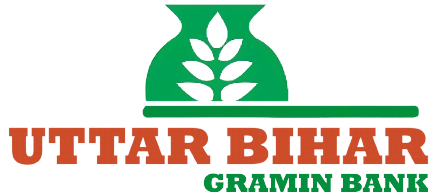If you already have a home loan with Bihar Gramin Bank, an **Add-On Overdraft (OD)** or a **Top-Up Term Loan** can be a quick way to meet extra cash needs without moving your primary mortgage. These options let you borrow more against the same property and credit history. Below I explain who can apply, what the bank usually checks, the difference between OD and term top-ups, how much you might get, how the bank secures the loan, costs to expect, and practical tips and FAQs to help you decide.
Who can get it
Existing home loan customers of Bihar Gramin Bank are the primary target. The bank looks for borrowers who have:
- Regular repayment history — accounts should be current, not overdue. Banks prefer accounts with consistent EMIs because that shows repayment discipline.
- Active relationship — a salary or savings account with the bank helps. It makes documentation and monitoring easier for both you and the lender.
- Satisfactory credit profile — a reasonable CIBIL or credit score. This shows the bank your broader credit behavior.
Eligibility (KYC, CIBIL, regular account)
- KYC: Up-to-date identity and address proofs are mandatory. The bank will refresh KYC even for existing customers to meet regulatory checks.
- CIBIL: There is no fixed cutoff published by the bank publicly, but a score above average reduces paperwork and improves approval chances. If your score has slipped, be ready to explain why and show improved cash flow.
- Regular account: A savings or operative account with Bihar Gramin Bank speeds up the process. Salary account holders often get faster approval and easier repayment options.
Exclusions (NRI/PIO)
Bihar Gramin Bank typically excludes Non-Resident Indians (NRIs) and Persons of Indian Origin (PIOs) from many domestic top-up products. Why? Documentation is harder to verify and enforcement of mortgage security is more complex across borders. If you are NRI/PIO, you should ask the branch for any special NRI-specific lending products instead.
Facility type (OD/Term)
- Add-On Overdraft (OD): This is a revolving facility linked to your home loan account or mortgage. You get a sanctioned limit and draw only what you need. Interest is charged on the drawn amount, usually calculated daily. Use this when you need flexible access—like staged home repairs or variable expenses.
- Term Loan (Top-Up): This is a lump-sum loan with a fixed tenor and EMI. You receive the full amount up front and repay in fixed installments. Choose this for large, one-time expenses like a major renovation, higher education fees, or debt consolidation.
Purpose (personal needs)
Common uses for these top-ups include:
- Home repairs, extensions, or renovations.
- Marriage or family expenses.
- Higher education or medical emergencies.
- Debt consolidation to replace higher-interest personal loans or credit card debt.
Why banks allow these uses: they are generally non-speculative and predictable. The bank already has a charge on your property, so it is comfortable lending for such personal needs.
Loan extent
The extra amount depends on the property value, the outstanding home loan, and the bank’s maximum loan-to-value (LTV) limit. Typical practice:
- If your property is valued at INR 30 lakh and your outstanding home loan is INR 12 lakh, a bank with a 75% LTV cap could allow total loans up to INR 22.5 lakh. That means a top-up of up to INR 10.5 lakh in this example.
- Some banks set upper limits on top-up size too, such as a fixed maximum (for example, INR 5 lakh or INR 10 lakh) for smaller branches. Check the branch product sheet for exact limits.
Why this matters: LTV protects the bank if property values fall. It also determines how much extra you can responsibly borrow.
Security set-up
The bank typically secures the top-up in one of two ways:
- Same mortgage (first charge) — the original security is extended to cover the added loan, common if the bank already holds first charge.
- Second charge — if another lender already has the first charge, Bihar Gramin Bank may take a second charge. Second-charge loans carry slightly higher risk for the bank and may attract stricter pricing or lower limits.
Expect documentation: a sanction letter, updated mortgage deed or a supplemental agreement, and possibly revaluation of the property.
Pricing overview
Interest and charges vary by product:
- OD pricing: Interest charged only on the amount used. This reduces cost if you draw sporadically. Rates are usually floating and may be tied to the home loan rate with a small margin.
- Term top-up pricing: Interest is on the full sanctioned sum from day one. Rates can be similar to or slightly higher than the original home loan rate because the bank takes fresh credit risk.
- Fees: Expect processing fees, valuation charges, and stamp duty on documents. Prepayment rules differ: many ODs have no prepayment penalty, while term loans may have charges for foreclosure within a specified period.
Example: If your OD rate is 9% p.a. and you use INR 2 lakh for one month, interest ≈ INR 1,500 for that month (calculated daily). With a term top-up at 9.5% for 5 years, your EMI and total interest will be higher because interest accrues on the full principal.
Practical tips
- Match product to need: Use OD for variable, short-term needs. Use term top-up for fixed, large expenses.
- Check effective cost: Calculate total interest for term loans and compare with OD’s expected draw pattern. OD can be cheaper if you don’t use the whole limit often.
- Negotiate rate: Bring your repayment record and relationship balances. Request a rate close to your home loan rate if you have a clean record.
- Watch LTV and charges: Ask the branch for the exact LTV, processing fee, valuation cost, and whether they will take a second charge.
- Document intended use: Some banks ask for proof of the purpose for the top-up. Keep bills or estimates handy if the bank requests them.
FAQs
- Q: Can a non-performing home loan get a top-up?
A: No. Banks will not sanction additional funds if the existing loan is in default. They need to see reliable repayment before extending more credit. - Q: Will my EMI change if I take an OD?
A: Not immediately. OD is separate and interest is charged on the drawn amount. EMIs on your original home loan remain until you convert the OD into a term loan. - Q: How long does approval take?
A: Typically 7–30 days depending on valuation, documentation and branch workload. Faster if you already bank with them and paperwork is complete. - Q: Are top-up funds eligible for home loan tax benefits?
A: Tax treatment depends on use and local tax rules. Interest on funds used to buy or construct a house generally has different treatment than funds used for repairs or personal expenses. Consult a tax advisor. - Q: Can I prepay the top-up?
A: Most ODs are flexible on prepayment. Term top-ups may have conditions or prepayment charges. Confirm the terms before you sign.
In short, an Add-On OD or Term Top-Up from Bihar Gramin Bank can be a cost-efficient way to tap extra funds using your existing home loan. Choose the structure that matches your cash flow, confirm LTV and charges, and use the money for constructive needs. If you’re unsure, discuss a scenario with the branch—bring your recent statements, KYC, and a rough estimate of required funds to speed things up.

Kritti Kumari is a banker and MBA graduate who writes about banking, finance, and customer-friendly services. She simplifies complex financial products into easy guides, helping readers understand Bihar Gramin Bank’s offerings and make smarter money decisions.

